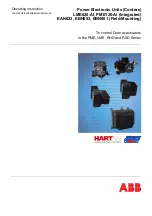
Soluciones y Tecnologías de Control Embebido S.A.P.I. de C.V.
www.sepradel.com [email protected] +52 1 833-389-4054
29
Manipulate the “pulse counter” value to obtain other trigger frequencies. For example, at 10
counts, with the Quantel laser flash lamp at 20 Hz, you will get laser shots at 2 Hz.
Configuration of Output B for Q-Switchof the Quantel laser
Output “B” of DG-3O1I-17 will be connected to the Q-Switch In input connector of the
Quantel laser. According to page 13 of the consulted manual
, the pulses for said input must be
TTL compatible and with a width of not less than 100 µs. In addition, in the same laser manual it is
established that the time or delay between the pulse of the flash lamp and the Q-Switch, can be
between 100 µs and 500 µs, so the value that will be shown here of 120 µs will be only as a
starting suggestion and in practice it should be adjusted experimentally until the desired firing
power is obtained.
Fig. 34. Set the output B for the Q-Switch of the Quantel laser, the Delay B value of 120 µs is only a
suggestion, in practice this value should be adjusted, the minimum width for the Quantel is 100 µs, so 150 µs
satisfies said condition of the laser Q-Switch input
Then configure the delay for the optical spectrometer connected to the retarder “C” channel.
Output C Configuration for Optical Spectrometer
Channel "C" of the Digital Retarder will be connected to your optical spectrometer. It is important
to consult the manual of the optical spectrometer in question and configure it so that its activation
is by edge and not by level. If per level, it will be capturing for as long as the trigger signal is active,
while per edge, it will only capture a spectrum each time it detects a pulse edge. Another aspect of
your spectrometer to check is the type of logic, negative or positive, of the trigger signal and the
minimum time of the trigger pulse so that it can detect it favorably. In the following figure, a
6
ICE450 User’s Manual: DOC00070 Rev. C







































